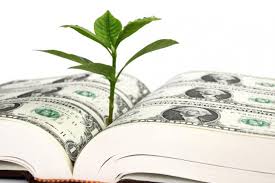
3 tips to value a pot building
With marijuana becoming a booming business for Colorado real estate taking up almost a third of the warehouse space of new leases in the metro area, how do you value a building with a marijuana tenant. The typical valuation methods for commercial property are the income approach and the sales approach. How should you adapt these two methods to factor in the marijuana business? What is a marijuana building really worth? How do you value the improvements that have been made?
With the increased demand for space and little room to expand in Denver (little to no available land), prices for industrial buildings have gone up substantially. According to DCT industrial trust, a large owner of industrial buildings in the metro area, prices are up by at least 60% as a result of the huge marijuana demand. Is this huge price increase in both price and rents sustainable?
First, this huge increase in commercial real estate prices is confined primarily to industrial (including light industrial sites). The marijuana industry currently needs lots of power, lots of water, and other industrial neighbors (due to smells, security, concerns, etc… these business are not highly desired in residential areas). Many growers are buying or leasing these building and spending hundreds of thousands upgrading to fit their needs. Most industrial buildings were never conceived to grow plants!
3 tips for valuing marijuana real estate:
- Marijuana improvements are worthless and should be factored out of the value
- Few alternative uses: I like to joke that Colorado is unlikely to become the indoor tomato growing capital of the world. What does this mean. The build out of marijuana space is not compatible with the desires of a typical industrial user. For example, why would a distribution company need 30 small rooms within a warehouse? The answer is simple; they could not use this configuration. The new tenant would spend money to rip out all the improvements and turn the warehouse back into its original use of a generic warehouse.
- Technology changing rapidly: The Marijuana industry is at its infancy. As more people get involved in the industry more resources are spent to service the industry. The biggest change in the works is LED lighting. For example, in the past huge HVAC’s systems were needed since the present lights give off ton of heat (this also necessitated huge electrical improvements for both the HVAC and lights). As the industry transitions to LED lights, the huge upgrades made to electrical, HVAC, and water (with less heat, plants dry out less) are worth nothing
- Lease rates are unsustainable and should be factored out of the value
- Non-credit tenants: The tenants occupying marijuana buildings are all considered non-credit (i.e. not a corporate lease with strong corporate backing like a Home Depot or Walgreen’s). With increased competition it is bound to happen that many of the current players will likely go out of business as the industry consolidates. Without a strong corporate backing the lease is not worth much more than the paper it is written on in the long term.
- Unsustainable lease rates: As competition increases and growers transition to lower cost markets (think pueblo) lease rates have to come down. This is basic economics as prices drop (and margins are compressed), producers will have to reduce their costs. One of the larges costs is overhead (rent, mortgage, etc…). These items will have to come down which will lead to the decrease in rental prices
- How should you value a marijuana building?
- Value the property like comparable non marijuana buildings: What does this mean? When I look at a marijuana property, I look at what a generic user has paid for comparable buildings and what they could pay for rent. I basically do a pro forma of what the building should lease for with reasonable expense ratios to come up with the value.
- How do I know what is a non-marijuana comparable? When I look at a comparable property, I look at the current owner, many times this can be a clue as to what type of business the property is, if the owner is Bob’s shoe company, it is likely not marijuana as opposed to if the property is held in the Mile-high partnership LLC. Unfortunately, there is no sure fire way other than to drive by the properties and see what the use is, many times it is apparent just by rolling the window down what the current property use is.
In summary, don’t be enamored by the high rents and ultimately prices being paid for commercial real estate in Denver. As the market changes it is imperative to evaluate the property as any other piece of real estate for a generic user since marijuana will not be grown indoors forever.
References:
- Increased demand for warehouse driving up rents: The Wall Street Journal
- How profitable is marijuana really? State.com
- 6 tips to maximize LED lights for grow operations: The weed blog
Written by Glen Weinberg, COO/ VP Fairview Commercial Lending. Glen has been published as an expert in hard money lending, real estate valuation, financing, and various other real estate topics in the Colorado Real Estate Journal, the CO Biz Magazine, The Denver Post, The Scotsman mortgage broker guide, Mortgage Professional America and various other national publications.
Fairview is a hard money lender specializing in private money loans / non-bank real estate loans in Georgia, Colorado, Illinois, and Florida. They are recognized in the industry as the leader in hard money lending with no upfront fees or any other games. Learn more about Hard Money Lending through our free Hard Money Guide. To get started on a loan all they need is their simple one page application (no upfront fees or other games).